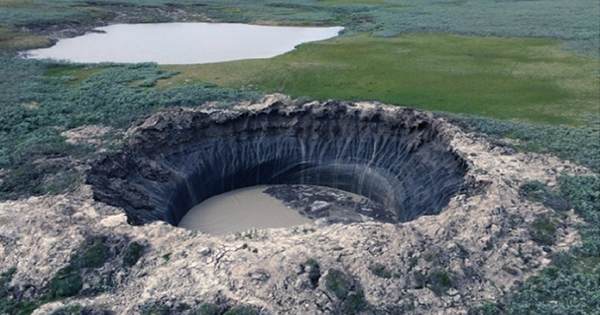Lakes are large bodies of water that receive water from rivers, groundwater, rivers, precipitation, and snowmelt. Lakes also hold vital geologic evidence of previous climatic changes.
Despite the fact that Mars is currently a frozen desert, researchers have found evidence of ancient lakes that existed there billions of years ago. These ancient lakes may have preserved information about the red planet’s old temperature and life.
Through a meta-analysis of years of satellite data that shows evidence for lakes on Mars, Dr. Joseph Michalski, a geologist in the Department of Earth Sciences, The University of Hong Kong (HKU) proposed that scientists might have dramatically underestimated the number of ancient Martian lakes that once existed.
Michalski and the international team recently published their results in Nature Astronomy, which describe a global analysis of ancient Martian lakes.
“We know of approximately 500 ancient lakes deposited on Mars, but nearly all the lakes we know about are larger than 100 km2,” explains Michalski. “But on Earth, 70% of the lakes are smaller than this size, occurring in cold environments where glaciers have retreated. These small-sized lakes are difficult to identify on Mars by satellite remote sensing, but many small lakes probably did exist. It is likely that at least 70% of Martian lakes have yet to be discovered.”
These tiny lakes on Earth are monitored by scientists to better understand climate change. The vanished Martian tiny lakes may possibly hold important clues to previous climates.
Not all lakes are created equal. In other words, some Martian lakes would be more interesting for microbial life than others because some of the lakes were large, deep, long-lived and had a wide range of environments such as hydrothermal systems that could have been conducive to the formation of simple life.
Dr. Joseph Michalski
The most recent study notes that the majority of Martian lakes are believed to have been between 3,500 and 4,000 million years ago, but that each lake may have only existed for a very little amount of time (10,000–100,000 years) throughout this time. This indicates that while ancient Mars was probably largely cold and dry as well, it did experience brief warming episodes.
Michalski adds, “Because of the lower gravity on Mars and the pervasive, fine-grained soil, lakes on Mars would have been very murky and might not have allowed light to penetrate very deeply, which could present a challenge to photosynthetic life, if it existed.”
Water, nutrients, and energy sources for potential microbial life, including light for photosynthesis, are all present in lakes. Therefore, lakes are the main areas that Mars Rovers like NASA’s Perseverance rover, which is currently on Mars, are exploring for astrobiological purposes.
But Michalski warns, “Not all lakes are created equal. In other words, some Martian lakes would be more interesting for microbial life than others because some of the lakes were large, deep, long-lived and had a wide range of environments such as hydrothermal systems that could have been conducive to the formation of simple life.”
From this perspective, it might make sense to focus future exploration on big, old, environmentally diversified lakes.
“Earth is host to many environments that can serve as analogs to other planets. From the harsh terrain of Svalbard to the depths of Mono Lake we can determine how to design tools for detecting life elsewhere right here at home. Most of those tools are aimed at detecting the remains and residues of microbial life,” said Dr. David BAKER, an ecologist at HKU School of Biological Sciences who is well-informed about the Earth’s microbial systems in lakes.
China successfully landed its first lander, Zhurong, on Mars in May this year. Zhurong is currently roving the plains of Utopia Planitia, exploring mineralogical and chemical clues to recent climate change.
Additionally, China is preparing a sample return mission that could focus on one of the intriguing lake deposits and is anticipated to take place at the end of this decade.
Dr. Joseph Michalski is an Associate Professor in the Department of Earth Sciences and Deputy Director of the Laboratory for Space Research at HKU. He worked with colleagues from Canada, USA, and the UK on the research, which is funded by the Research Grants Council in Hong Kong.
















